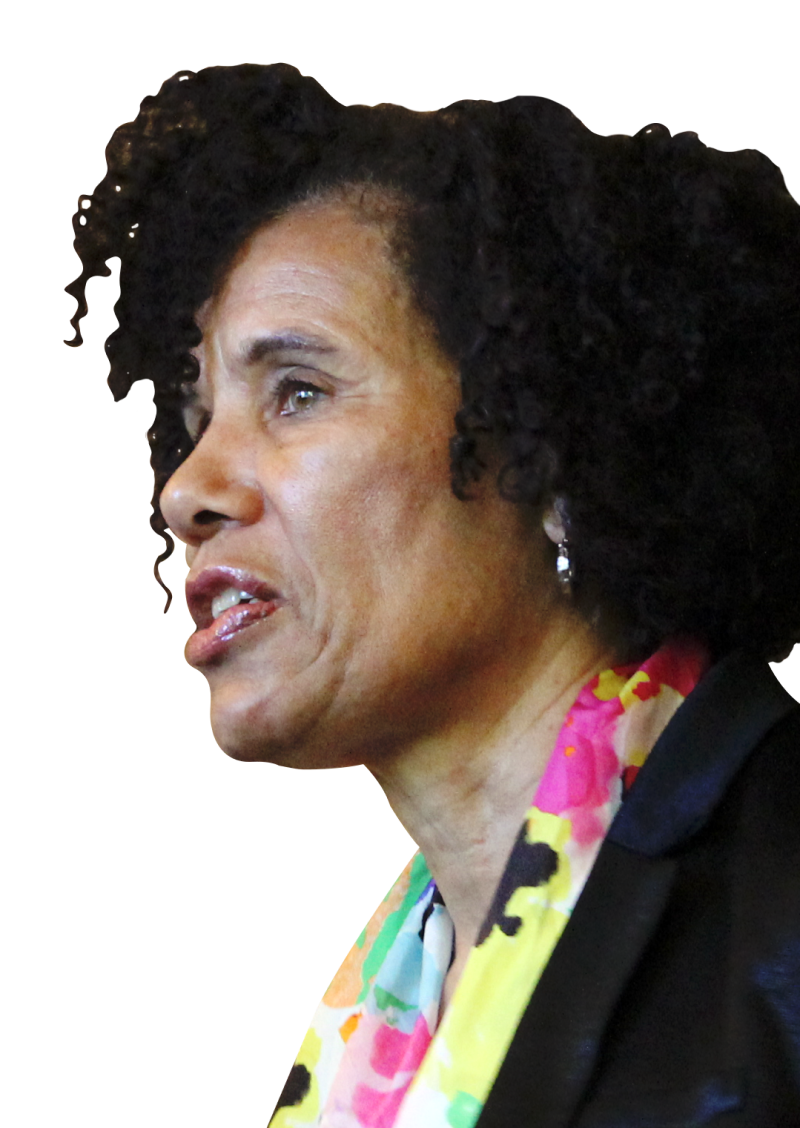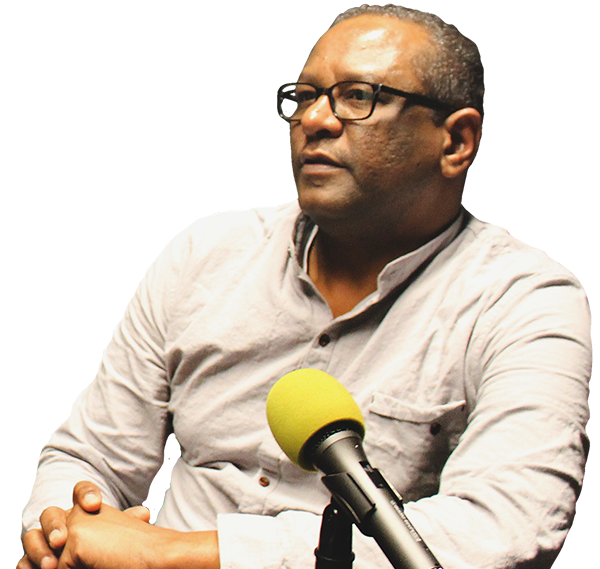Ethiopia, located in the Horn of Africa, is home to nearly 105 million people154 and with a GDP of $84.36 billion.155 Multiple factors fuel local struggles156 and drive displacement within the country, including resource-based conflict around land ownership and access,157 political exploitation along ethnic and cultural differences, the proliferation of arms, and border disputes.158 Despite positive political change after Prime Minister Abiy Ahmed took office,159 new displacement figures are at an all-time high. Almost 2.9 million new displacements associated with conflict and violence were recorded in 2018—the highest figure recorded worldwide. Aside from conflict, many Ethiopians are forced to migrate due to the Ethiopian government’s plans of regional transformation, particularly in the Lower Omo Valley.160
Ethiopia accounts for less than 1 percent of the world’s total CO2 emissions,161 yet it faces especially intense effects of the climate crisis, including ever-rising temperatures, erratic rainfall distribution, recurrent droughts, floods, and desertification. There is a high degree of uncertainty over rainfall, with projections ranging from a decrease by 25 percent to an increase by 30 percent in the 2050s.162 For example, the climate crisis will most likely contribute to severe droughts in the desert-like conditions of the northeast, east, and southeast lowlands, and will intensify heavy rainfall events during the two rainy seasons of the humid rainforest in the south and southwest.163
Under a high emissions scenario for Ethiopia, the number of days with very heavy precipitation (20 millimeters or more) could double, increasing the risk of floods.164 Changing temperature and rainfall patterns result in substantial desertification, soil erosion, and loss of diversity, including wildlife.165 Likewise, these changes have implications for Ethiopia’s human and social development, such as water and food accessibility and public health challenges.
Ethiopia’s economy is based largely on the agricultural sector, comprising 40 to 50 percent of total GDP and employing 80 to 85 percent of the population. As a result, the country is especially vulnerable to decreasing agricultural productivity due to drought,166 land degradation,167 and unsustainable land use.168 These challenges and continuing conflicts over land and resources lead to numerous displacements every year.169
In 2015, Ethiopia suffered one of its worst droughts in 50 years due to the failure of two consecutive rainy seasons.170 This drought led to increased food insecurity and displaced 280,000 people.171 Most recently, in 2018, 296,000 new displacements were recorded, similarly associated with drought and flooding.172 That year, 8.1 million people were identified as food insecure and in need of urgent assistance.173 Recurrent and severe drought has contributed to conflict among communities over access to water and pasture,174 particularly as drought pushes certain ethnic groups to migrate into another ethnic group’s area, which can lead to tensions.175
The climate crisis in Ethiopia will also have devastating impacts on people’s health. For example, increasing floods will facilitate larger outbreaks of diseases such as malaria, where estimates predict that by 2070, almost 130 million people will be at risk.176 Similarly, the country will see higher rates of dengue fever and waterborne diseases, like cholera and dysentery, as well as respiratory diseases associated with droughts.177
Ethiopia has already put in place a number of strategies and policies to adapt to the climate crisis, such as signing and ratifying the Paris Agreement and implementing the Climate Resilient Green Economy Strategy178 and the second Growth and Transformation Plan.179 Most recently, the Government of Ethiopia created the National Adaptation Plan: Ethiopia’s Climate Resilient Green Economy, which aims to enhance food security through selecting resistant and tolerant crop and livestock to increase agricultural productivity, improve integrated health and environmental protocols, and increase access to potable water.180
Despite these attempts by the Ethiopian government, such efforts cannot succeed in preventing the effects of the climate crisis on the most marginalized communities. Particularly, government attention must be directed toward the plight of the Indigenous population in the Lower Om Valley, who are historically marginalized and especially vulnerable to the climate crisis.
- 154“Ethiopia, Data,” World Bank, accessed June 22, 2019, https://data.worldbank.org/country/ethiopia.
- 155“Overview, Ethiopia,” World Bank, accessed June 21, 2019, http://www.worldbank.org/en/country/ethiopia/overview.
- 156Ibid.
- 157Simon Richards and Gezu Bekele, Conflict in the Somali Region of Ethiopia: Can Education Promote Peace-Building? (Medford, MA: Feinstein International Center, Tufts University, March 2011), accessed June 24, 2019, https://fic. tufts.edu/assets/Conflict-Somali-Ethiopia.pdf.
- 158Internal Displacement Monitoring Centre, Global Report on Internal Displacement 2019.
- 159After Prime Minister Abiy Ahmed took office in April 2018, he took a less lethal approach to protestors, ended the state of emergency and has released political prisoners, lifted bans on social media websites, and forged a peace deal with Eritrea. Mark Yarnell, The Crisis Below the Headlines: Conflict Displacement in Ethiopia, (Washington, DC: Refugees International, November 2018), https://static1.squarespace.com/static/506c8ea1e4b01d9450dd53f5/t/5becc….
- 160Elizabeth Fraser and Frederic Mousseau eds., “How They Tricked Us: Living with the Gibe III Dam and Sugarcane Plantations in Southwest Ethiopia,” Climate Refugees: The Climate Crisis and Rights Denied 74 Oakland Institute, CA, (2019), https://www.oaklandinstitute.org/sites/oaklandinstitute.org/files/ethio….
- 161“CO2 Emissions (Metric Tons per Capita), Data.” World Bank, accessed June 25, 2019, https://data. worldbank.org/indicator/EN.ATM.CO2E.PC?locations=ET&view=map.
- 162World Bank, “CO2 Emissions.”
- 163Nikolas Scherer and Dennis Tänzler, The Vulnerable Twenty—From Climate Risks to Adaptation, (Berlin, Germany: adelphi, October 1, 2018), https://www. adelphi.de/en/system/files/mediathek/bilder/The%20 Vulnerable%20Twenty%20–%20From%20Climate%20 Risks%20to%20Adaptation%20-%20adelphi.pdf.
- 164World Health Organization, Climate and Health Country Profile Ethiopia 2015, (Geneva, Switzerland, 2015), https://apps.who.int/iris/bitstream/handle/10665/208861/WHO_FWC_PHE_EPE….
- 165Federal Democratic Republic of Ethiopia, Ethiopia’s Second National Communication, 208.
- 166Internal Displacement Monitoring Centre, Global Report on Internal Displacement 2016.
- 167"Action Against Desertification in Ethiopia,” Food and Agriculture Organization of the United Nations, (2017), http://www.fao.org/3/i9172en/I9172EN.pdf.
- 168Food and Agriculture Organization, “Action Against Desertification.”
- 169Federal Democratic Republic of Ethiopia, Ethiopia’s Second National Communication, xvi.
- 170“Ethiopia 2015 Drought Map Book,” FEWS NET, (December 17, 2015), http://fews.net/sites/default/ files/documents/reports/FEWS%20NET_Ethiopia%20 2015%20Drought%20Map%20Book_20151217_0.pdf.
- 171Internal Displacement Monitoring Centre, Global Report on Internal Displacement 2016—Ethiopia Spotlight, (2016), http://www.internal-displacement. org/sites/default/files/inline-files/GRID-2016-Ethiopia-spotlight.pdf.
- 172“Ethiopia,” Internal Displacement Monitoring Centre, accessed June 20, 2019, http://www.internal-displacement.org/countries/ethiopia.
- 173UN Office for the Coordination of Humanitarian Affairs, Ethiopia Humanitarian Needs Overview 2019– Ethiopia, (March 7, 2019), https://reliefweb.int/report/ethiopia/ethiopia-humanitarian-needs-overv….
- 174“Ethiopia Humanitarian Requirements Document,” Joint Government and Humanitarian Partners Document, (2016), https://reliefweb.int/sites/reliefweb.int/files/resources/ethiopia_hrd_….
- 175Internal Displacement Monitoring Centre, Global Report on Internal Displacement 2016—Ethiopia: Extreme Conditions, Extreme Measures, (May 1, 2016), https://www.refworld.org/docid/57a98bf910.html.
- 176World Health Organization, Climate and Health Country Profile Ethiopia, 3.
- 177Federal Democratic Republic of Ethiopia, Ethiopia’s Second National Communication, xxvii.
- 178Government of Ethiopia, Ethiopia’s Climate-Resilient Green Economy Strategy, (2011), https://www.undp. org/content/dam/ethiopia/docs/Ethiopia%20CRGE.pdf.
- 179Government of Ethiopia, Second Growth and Transformation Plan, (2017), https://en.unesco.org/creativity/governance/periodic-reports/2017/ethio….
- 180Government of Ethiopia, Second Growth.




